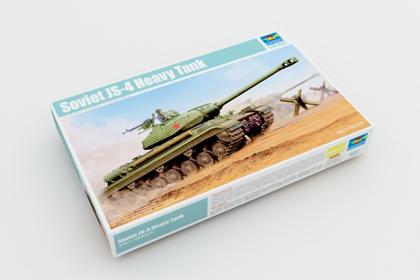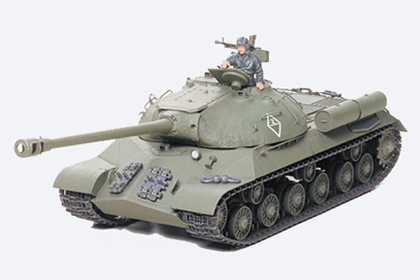This is the Trumpeter 05573 kit in 1/35 scale, of the ‘Russian JS-4 Heavy Tank’.

History
Several alternative armaments were explored in paper studies, although ultimately the IS-2’s original 122mm gun was retained. An effort was also made to make use of technical data derived from study of the German wartime Panzer V Panther tank, which influenced the layout of the IS-4’s engine cooling system.
The tank was approved for mass production in 1948 but due to disappointing speed and mobility only 200 were build. Most of these were transferred to the Russian Far East in 1950 in preparation for the planned Soviet intervention in the Korean War. When this operation was aborted the tanks nevertheless remained stationed in the region until their decommissioning in the 1960s.
Manufacturer
Where I got it
- Stoppel Hobby (July 2014)
